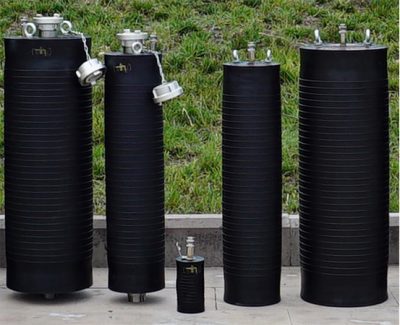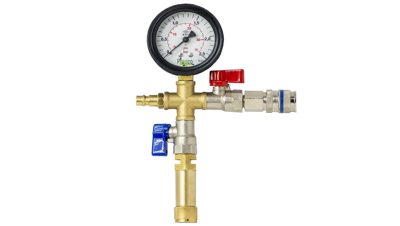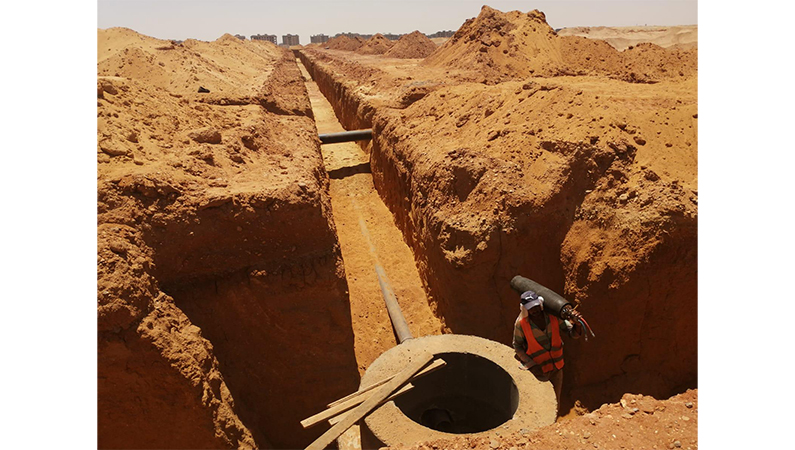Pipeline testing is essential for verifying the integrity of new or rehabilitated pipelines before they are open to service. In North America, ASTM standards such as ASTM C828, ASTM C924, and ASTM F1417 govern procedures for low-pressure air and hydrostatic testing.
What Tools Are Needed for Testing According to ASTM?
Inflatable Pipe or Test Plug
Select the correct test plug as per the pipe’s inner diameter, required testpressure, and the material of the pipe. Inflatable Pipe Test Plugs are used for both air and water tests.

Air Compressor or Water Source
- For air testing, use a calibrated air compressor with pressure regulator.
- For hydrostatic testing, use a water tank or pump capable of filling the pipeline and maintaining test pressure.
Pressure Control and Monitoring Devices
- Air Control Devices with the suitable pressure range for the planned tests.

- Timers for recording test durations.
Accessories
- Ropes or chains to be attached to the hooks for pipe plug installation and removal.
- Long inflation hoses to allow inflation from outside the danger zone.
- Centralizers to ensure proper plug alignment into the pipe.
- Pipe cleaning tools such as wire brushes, water jetting, etc. to make sure that the pipe inner surface is free from debris and sharpen objects.
ASTM Testing Methods Overview
1. ASTM C828 & ASTM F1417: Low-Pressure Air Testing
- Common for gravity sewer lines.
- Air is introduced until test pressure reaches 3.5 psi (24 kPa) above groundwater backpressure.
- A stabilization period, usually 2 minutes, is followed by a timed pressure drop monitoring.
2. ASTM C924: Hydrostatic (Water) Testing
- Suitable for pipe materials sensitive to air testing or where water is preferred.
- The line is filled with water and the predefined test pressure is maintained.
- Water loss is measured during the defined period, typically 2 hours.
Step-by-Step Testing Process as per ASTM Standards
Step 1: Preparation and Inspection
Before starting the application, follow the below tips:
- Clean the pipe and inspect the test area from debris and sharpen object.
- Check plugs and accessories for wear or damage.
- Measure groundwater elevation, as it affects test pressure, especially for air tests.
Step 2: Install the Pipe Plug
Once completing the preparation steps, proceed to the following instructions:
- Insert and centralize the test plug at each end of the test section.
- Inflate the plugs up to the instructed pressure by PlugCo. NEVER under-inflate or over-inflate the plug!
- Support the plugs to resist test pressure forces.
Step 3: Conduct the Test
For Air Testing (ASTM F1417):
Fill the air in the test area until 3.5 psi (plus groundwater pressure) is achieved, and allow stabilization time. Then, begin the timed test, and measure how long the pressure remains above a minimum threshold.
For Water Testing (ASTM C924):
First, Fill the pipe section, to be tested, completely with water, and maintain the defined test pressure for at least 2 hours. Then, check for any measurable drop in water level or pressure during the test period.
Step 4: Monitor and Record
Take notes of pressure readings and time intervals, and watch for signs of leakage or pressure decreasing. If the section fails, locate the issue before retesting.
Safety and Compliance Tips
In order to make sure the tightness test is performed in the ideal condition, pay attention to the following points:
- Always follow the manufacturer’s inflation pressure limits.
- Use long hoses and remote gauges to stay clear of the danger zone.
- Never enter a confined space without proper safety training and ventilation.
- Follow OSHA regulations in addition to ASTM standards during testing.
Post-Test Procedure
- Slowly release test pressure before fully deflating the plug.
- Use the attached ropes to the hooks to remove the plug safely.
- Inspect the plug for damage and store it in a clean, dry location as per the reccomendations of PlugCo.
By following the procedures outlined in ASTM C828, C924, or F1417, you can ensure that your pipeline meets regulatory compliance and is ready for operation. Always consult the full ASTM standards and PlugCo’s safety manuals before conducting tests.
